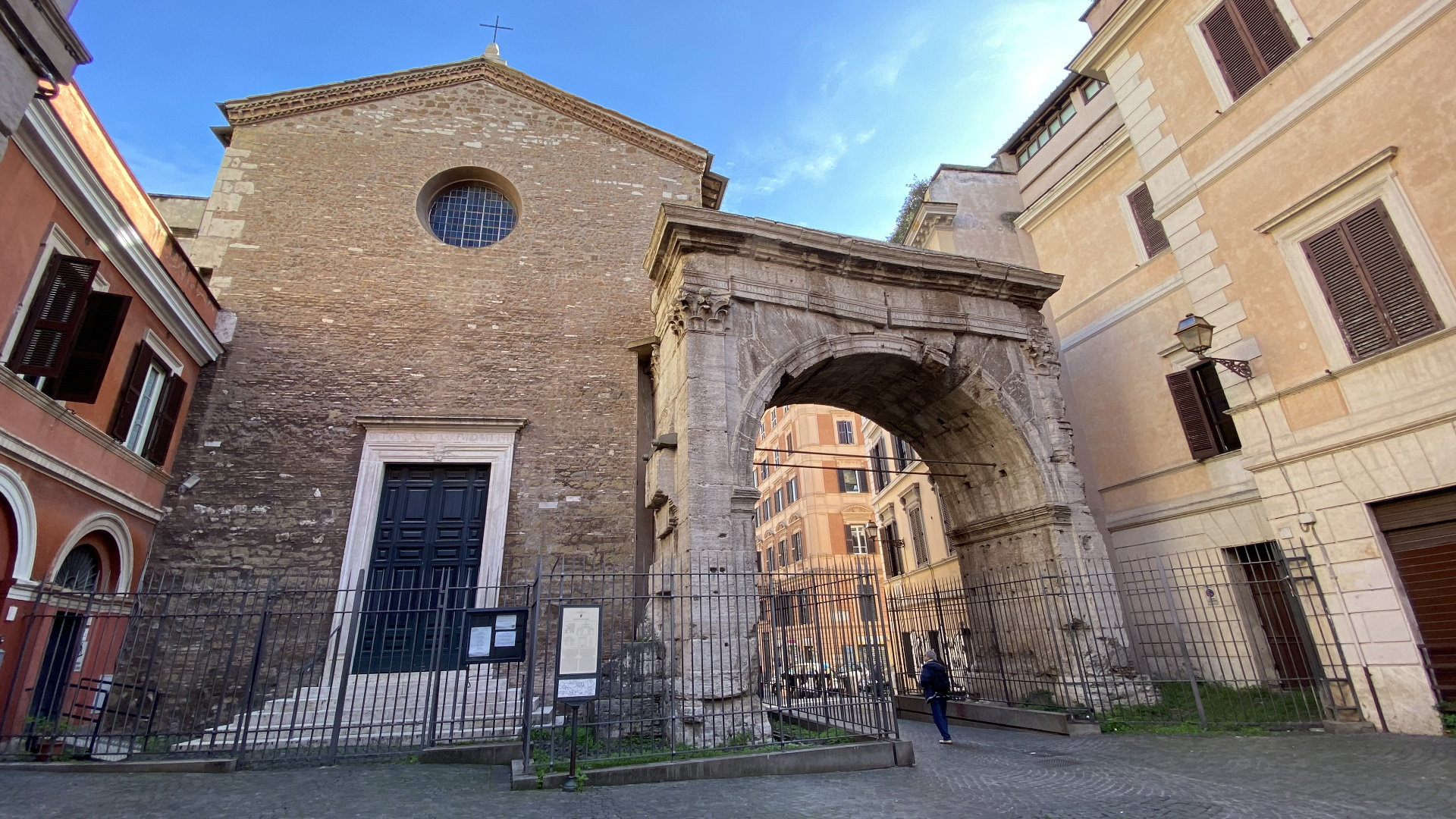
The small church leaning against the Arch of Gallienus (and now the site of the “parish of Santa Maria Maggiore in San Vito”) stands on the ancient mons Cispius and is of very ancient origin. It is in fact first mentioned in the 8th century as San Vito in Macello for the nearby Macellum Liviae, a commercial complex dedicated to Livia, the wife of Augustus, which stood on the Esquiline Hill.
After falling into disrepair, the church was renovated in 1477 by Pope Sixtus IV: the marble portal and Gothic mullioned windows on the side are from this period. In the early 20th century it was decided to reverse the orientation of the church and a new façade was opened on Via Carlo Alberto. Works begun in the 1970s restored its ancient structure, with the main entrance on Via di San Vito.
The church has a simple gabled façade and a rectangular plan. The interior, with a single nave, semicircular apse and coffered ceiling, preserves a beautiful Renaissance altar with a fresco attributed to Antoniazzo Romano. The so-called “Stone of Iniquity” (pietra scellerata) can be seen on the right hand side. It was believed to have been used as an instrument in the martyrdom of many Christians. The old tradition was that it was miraculous and that scrapings from it were a preventative for rabies should one be bitten by a mad dog.
Of great historical-archaeological interest is the crypt of the church: excavations carried out in the 1970s enabled a better understanding of the ancient topography of the area and brought to light the medieval foundations of the church, remains of the ancient chapel walls, perhaps dating as far back as the 6th century B.C., a section of paving of the Roman road that probably passed under the Porta Esquilina, hydraulic works (including the castellum aquae) related to the Anio Vetus aqueduct, and some late antique tombs.
Information
Mass times
Mondays: 08.00, 18.30Tuesdays: 08.00, 18.30Wednesdays: 08.00, 18.30Thursdays: 08.00, 18.30Fridays: 08.00, 18.30Saturdays and public holidays: 08.00, 18.30 Sundays and public holidays: 11.00
Times are subject to change, so please always contact the church
Info archaeological opening hoursMonday to Saturday from 10.00 to 12.45 and from 14.30 to 18.00Sunday from 14.30 to 18.00Reservations for groups at the following e-mail address cripta.sanvito@gmail.com
 Condividi
Condividi
Location
To find out about all accessibility services, visit the Rome accessible section.











































